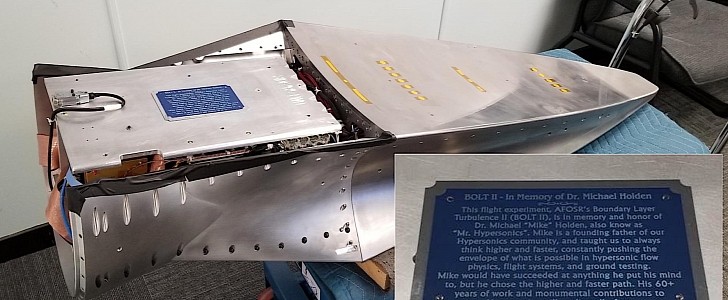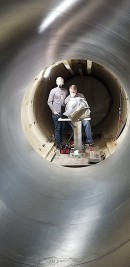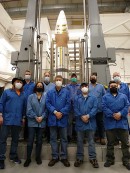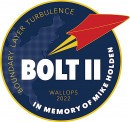In recent years, the term hypersonic has become commonplace in certain areas of human activity. Being pushed under the spotlight mostly by the developments in the military sector, it’s a concept that has far-reaching implication for the future of our race.
Hypersonic is a term that describes hardware traveling at speeds faster than Mach 5 (over 3,800 mph/6,100 kph). So far, we humans have not been able to make all that many things that move that fast, and a future, large-scale use of hypersonic flight for more aspects of our lives would require a better understanding of what happens to the vehicle when moving so fast. Including on something called boundary-layer transition and the turbulence associated with it.
In essence, when a vehicle moves through the air, a thin boundary layer of the stuff gets dragged along with the aircraft. At the leading edge, this layer is all calm and serene, but as it moves toward the back, it becomes turbulent. At hypersonic speeds, this turbulence translates into huge amounts of drag and heat.
To find more about how that unfolds, the Air Force Research Laboratory/Air Force Office of Scientific Research (AFRL/AFOSR) and a number of other interested organizations created something called BOLT. Short for Boundary Layer Transition and Turbulence, it is a test vehicle meant to give engineers a better understanding of the “prediction and control of viscous drag and heating on hypersonic vehicles.”
The groups involved already had an unsuccessful test of the BOLT a while back, and now, on March 21, they’re ready to try again. They’ll do so from the NASA Wallops Flight Facility in Virginia using the Bolt and a two-stage sounding rocket.
Packed with hundreds of sensors, BOLT will take off on a 10-minute flight, being visible from 10 to 120 seconds from parts of seven states: Virginia, Maryland, Delaware, New Jersey, North Carolina, Pennsylvania, West Virginia, but also Washington, D.C.
Going up, the hardware is expected to reach Mach 6 speeds at an altitude of 281 km (175 miles), with the descent speed expected to be slightly less, of “just” Mach 5.5. For the duration of the flight, hundreds of sensors will be actively monitoring the performance of the vehicle, as will an army of balloons also equipped with sensors.
As per the Air Force, if you happen not to live in one of those seven states, and would like a front-row seat to the launch, you can watch it all on the NASA Wallops YouTube channel later today.
In essence, when a vehicle moves through the air, a thin boundary layer of the stuff gets dragged along with the aircraft. At the leading edge, this layer is all calm and serene, but as it moves toward the back, it becomes turbulent. At hypersonic speeds, this turbulence translates into huge amounts of drag and heat.
To find more about how that unfolds, the Air Force Research Laboratory/Air Force Office of Scientific Research (AFRL/AFOSR) and a number of other interested organizations created something called BOLT. Short for Boundary Layer Transition and Turbulence, it is a test vehicle meant to give engineers a better understanding of the “prediction and control of viscous drag and heating on hypersonic vehicles.”
The groups involved already had an unsuccessful test of the BOLT a while back, and now, on March 21, they’re ready to try again. They’ll do so from the NASA Wallops Flight Facility in Virginia using the Bolt and a two-stage sounding rocket.
Packed with hundreds of sensors, BOLT will take off on a 10-minute flight, being visible from 10 to 120 seconds from parts of seven states: Virginia, Maryland, Delaware, New Jersey, North Carolina, Pennsylvania, West Virginia, but also Washington, D.C.
Going up, the hardware is expected to reach Mach 6 speeds at an altitude of 281 km (175 miles), with the descent speed expected to be slightly less, of “just” Mach 5.5. For the duration of the flight, hundreds of sensors will be actively monitoring the performance of the vehicle, as will an army of balloons also equipped with sensors.
As per the Air Force, if you happen not to live in one of those seven states, and would like a front-row seat to the launch, you can watch it all on the NASA Wallops YouTube channel later today.





